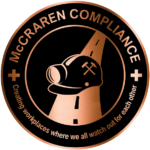
Photo: Jetta Productions Inc/gettyimages
Guangzhou, China — Shift workers may be at greater risk of developing kidney stones, results of a recent study suggest.
The National Institutes of Health describes kidney stones as a pebble-like pieces of material that can form in the kidneys when high levels of certain minerals are present in urine. If a stone gets stuck as it leaves the kidney and lodges in the ureter, bladder or urethra, it can cause severe pain.
Researchers in China looked at data from nearly 226,000 people in the UK Biobank research database. More than 2,800 participants developed kidney stones over almost 14 years.
Compared with the participants who had “traditional” shifts, people who worked second or third shifts were 15% more likely to develop kidney stones, particularly younger employees or those who engaged in low levels of manual labor.
“We found that shift work is associated with a higher risk of kidney stone events; an association that is partially mediated by several lifestyle factors, including smoking, sleep, fluid intake and body mass index,” study co-author Yin Yang, from Sun Yat-sen University, said in a press release.
Yang recommends that employers support healthy lifestyle habits among shift workers. That can include educational programs that promote weight management, increased fluid intake, healthy sleep habits, reduced sedentary behavior and smoking cessation.
“These interventions have the potential to alleviate the adverse effects of shift work on kidney stone formation and improve workers’ health,” Yang said.
The study was published in journal Mayo Clinic Proceedings.
McCraren Compliance offers comprehensive safety training to help prevent accidents. Visit our class calendar to see how our training and consulting services can enhance your safety efforts.
Original article published by Safety+Health an NSC publication


